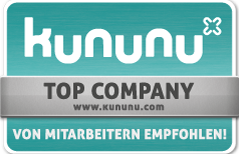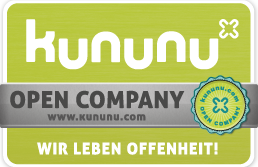The easysquare customer app for private customers – co-branded and native

If you want to reach private customers (tenants and potential tenants), your success depends not only on the functions provided, but most importantly the look and feel of the application. Experience has shown that those who want to create an app that really “rocks” choose a native app, which is developed especially for the operating system in question.
The easysquare customer app is now co-branded with your company
The new easysquare customer app for tenants is a native app for iOS and Android that provides all the benefits of a native app; for example, the use of operating system functions such as GPS, camera, contact data and push notifications. With the app, tenants have full access to their contract data and can send queries or report defects as part of communication with craftsmen and administrators. Unlike a conventional tenants’ portal with a website, the data is called in an app that is optimised for the usage context, just as the tenant would expect from an app procured by a private customer. In addition to the native easysquare customer app, the web app can also be accessed via the browser on a PC.
The app can be installed from Apple’s App Store or from Google Play as a co-branded app with the company-specific logo. Tenants can search for the specific company name in the App Store.
Onboarding – the first phase of use
After the app is downloaded, the login and registration processes follow. The first phase of using an app, known as onboarding, needs to motivate the user to get to know the app and its functions. Especially in the private customer area, usability needs to be a particular focus. If the app does not feel right and operation is not intuitive, the tenant will use it only once and may even uninstall it.
Registration
is based on an activation code sent by post, which ensures that only the
authorised person can view contract-related data. The services within the app
cannot be used until activation has been performed successfully. Following
activation, the tenant can make full use of the services.
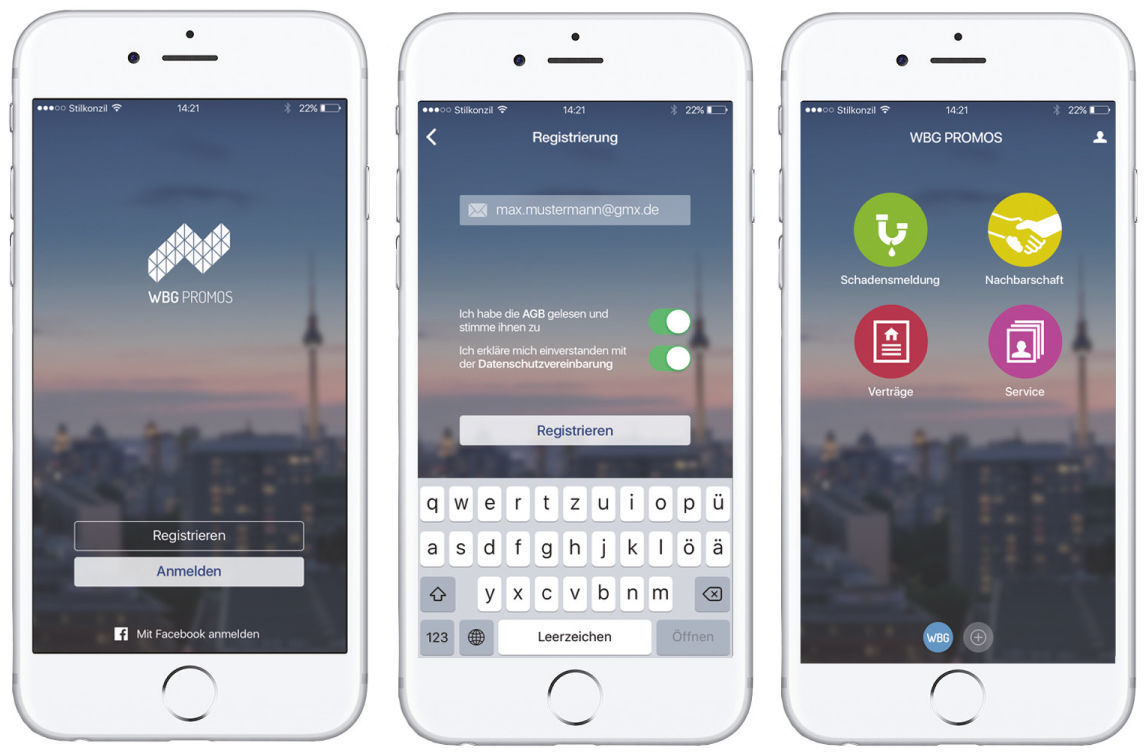
The easysquare customer app services
Unlike apps used by an administrator or house caretaker (e.g., for residential property inspection on the iPad), the use context of the easysquare customer app is limited to essential functions. Content that is not absolutely necessary needs to be eliminated and the limited space that a smartphone has to offer should be used in an optimal way. In addition, users are often in distracting environments (in traffic, at the shopping centre) and want to use a function in a targeted manner. The structure of the easysquare customer app is simple and intuitive. In the “Contracts”, “Tenants’ services” and “Defect report” services, tenants can carry out activities themselves and use information relating to the contractual relationship.
All contract-related documents and master data from the SAP® system are available in the “Contracts” service. For example, this is where tenants can view their utility statement or general contract and object master data around the clock. In this way, tenants can keep track of the contractual relationship and all the master data concerning them. Scanned documents, for example from the tenant’s file, can be accessed in the app at any time.
Tenants can use the “Defect report” service to report damage or defects in the property, building or living environment. They then receive notification of every change to the status of the repairs process. Communication between craftsmen and tenants or property managers, such as any necessary queries, takes place via the easysquare customer app itself.
Tenants can
send other requests, such as applications for permission to sub-let or make a structural
modification, using the “Tenants’ services” service. Tenants receive any forms
they request, for example a Certificate of Rent Paid, directly in the app.
Here, too, the tenant can track the process sequence via the status
information, making repeated enquiries unnecessary.
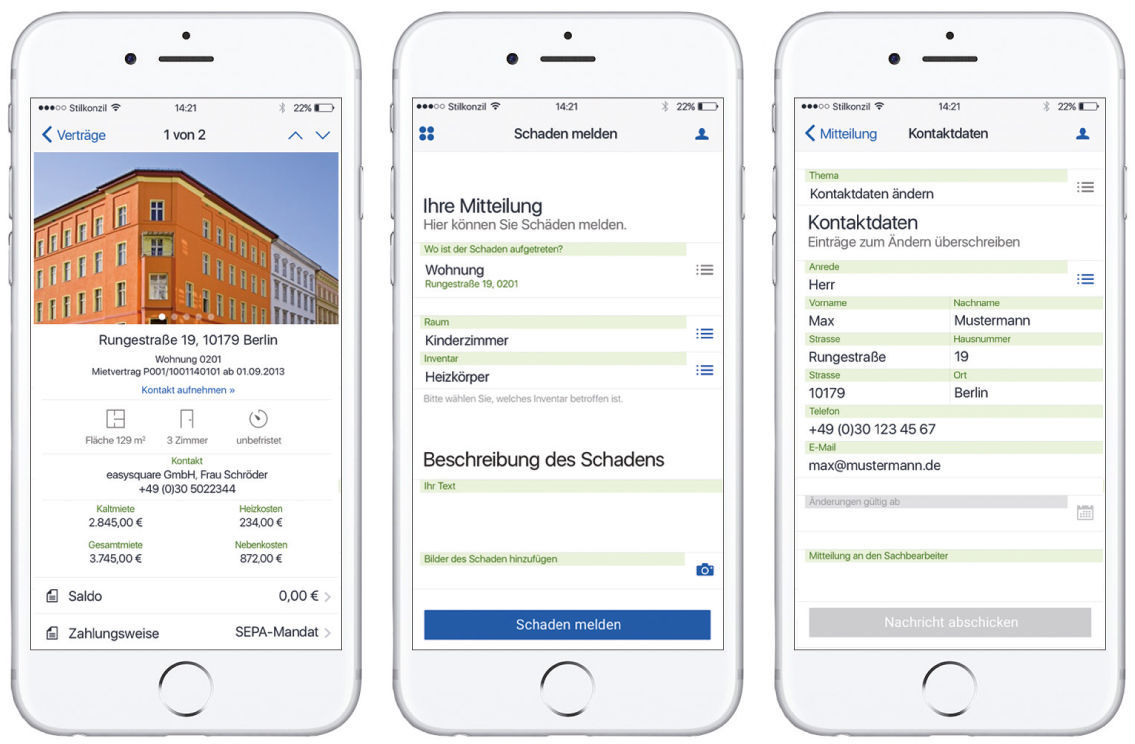
The easysquare customer app results in significant cost savings
The benefits of a customer app are clear. Transferring self-service tasks to the tenants saves internal resources and results in process improvements. From the tenants’ perspective, reporting requests and problems using a smartphone is a significant improvement in terms of reaching the housing company. In particular, the option to report defects while on the go and track their status changes provides tangible benefits for tenants and convinces them to use this method of communication in the future as well.
In a cost comparison between conventional communication (by phone and post) and use of the easysquare customer app, the savings potential is extremely clear. A phone call to the call centre costs an average of €3.22. Experience has shown that an average of nine calls are received per apartment each year. In particular a number of calls are required when scheduling appointments between the tenant and tradesmen as part of the repairs process, as well as for enquiries regarding the status of a tenant request. Furthermore, sending letters also generates considerable costs.
In
Figure 3, you can see a sample calculation for an inventory of 20,000
rental objects.
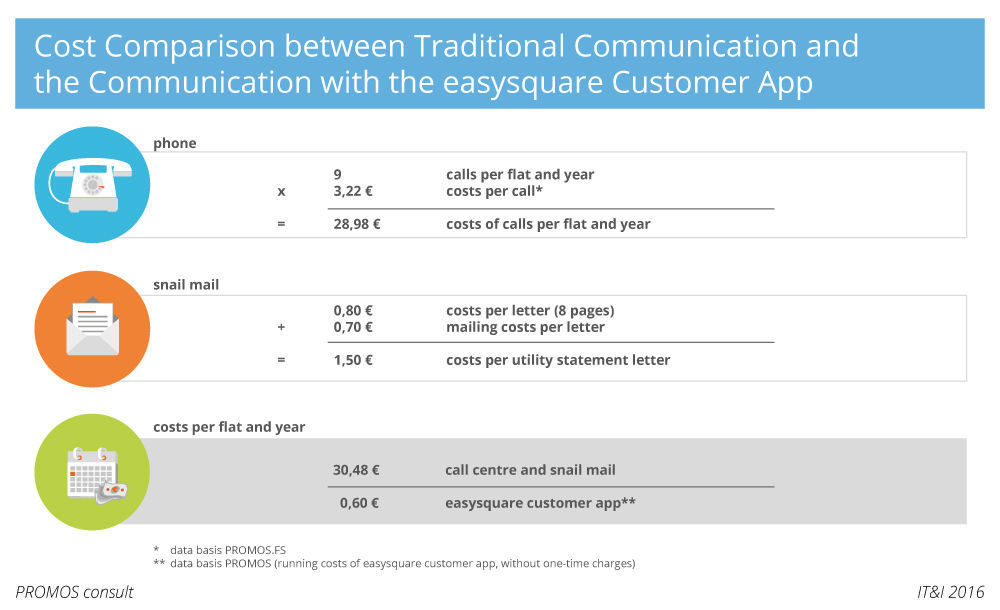
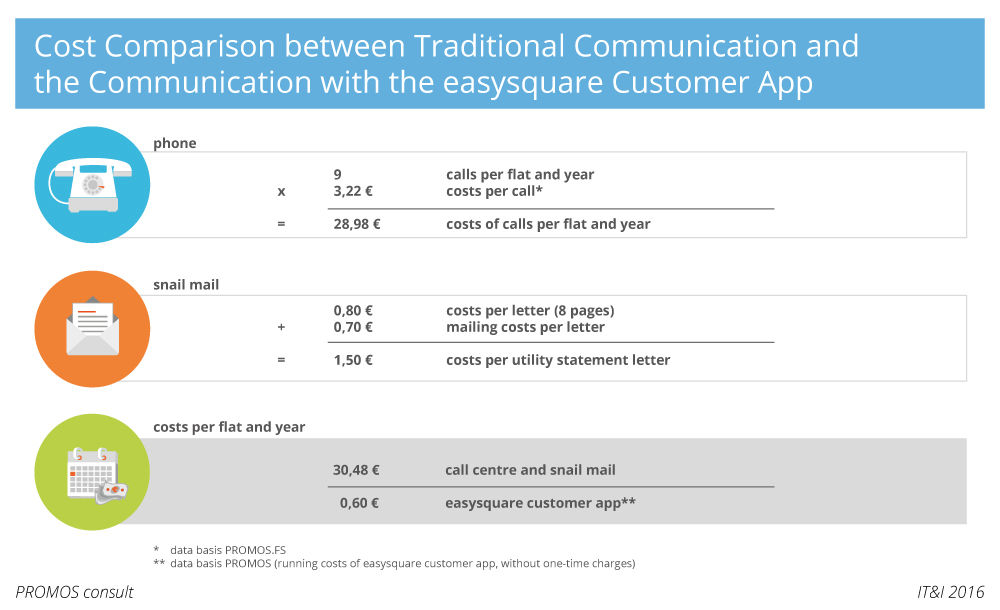 Figure 3: Calculation for an inventory of
20,000 rental objects.
|
Author:

Theresia Mussauer
Product Manager
PROMOS consult
Other articles by this author:
- Article "The easysquare customer app for private customers – co-branded and native"
- Article "Top-class tenant change – iModa project implemented by DOGEWO21"
- Article "Now also available natively for Android – the easysquare customer app for tenants and interested parties"
- Article "Renting with easysquare – a simple and modern application for the key process in the housing industry"
